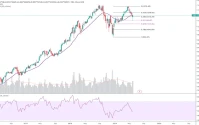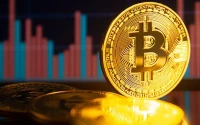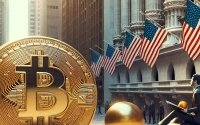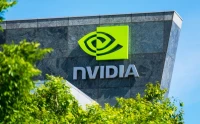Stock Market Rollercoaster: Tech's Tumble and the Rate Cut Mirage
The stock market took a dive yesterday, marking its worst single-day performance in over a month. The Dow Jones Industrial Average slumped by 1.7%, a hefty 816 points. The S&P 500 mirrored that drop, also down 1.7%. The tech-heavy Nasdaq Composite fared even worse, shedding 2.3%. It wasn't a pretty picture, and the immediate culprit seemed to be a tech sell-off that intensified and spread like a virus to other sectors.
Contagion or Correction?
The "Magnificent Seven" (Tesla, Nvidia, and the like) took it on the chin, continuing a recent downward trend. But it wasn’t just AI hype stocks getting hammered; momentum and riskier plays were also dumped. What's interesting is that investors didn't flock to the traditional safe haven of bonds. Instead, bond yields rose, with the 2-year Treasury note climbing to 3.59% and the 10-year hitting 4.11%. This simultaneous selling in both stocks and bonds is a bit unusual. It suggests a broader shift in sentiment, not just a flight to safety.
This brings us to interest rate expectations. The probability of a December rate cut, as priced into the market, plummeted from 62.9% to 51.6% in a single day. At one point, it even dipped below 50%. This is a crucial detail. The market had been riding high on the anticipation of easier monetary policy, and the sudden reappraisal of those expectations clearly spooked investors.
Now, here’s where the analysis gets interesting. Jefferies' VP of equities trading, Jeffrey Favuzza, described the situation as "contagion," originating in tech and then spreading to healthcare, energy, and staples. He also points to a possible "air pocket" of data due to a recent government shutdown. This is a valid point, but it also raises a critical question: How much of this sell-off is a genuine reassessment of economic fundamentals, and how much is simply algorithmic trading reacting to headlines and shifting probabilities? It’s tough to disentangle the two.
And this is the part of the report that I find genuinely puzzling. If you look at the trading volumes, they weren't exceptionally high. Favuzza himself noted that the flows on his desk weren't "panicky." This suggests that the sell-off, while significant in percentage terms, wasn't driven by widespread investor capitulation. Instead, it looks more like a controlled deleveraging, perhaps by hedge funds or other institutional players who were overexposed to tech and rate-cut hopes.

One thing that struck me was the cookie notice included in one of the articles. It was completely irrelevant to the actual stock market news. It was as if someone had just copy-pasted text without even reading it. How often does this happen with market analysis? Are we getting accurate information, or just a bunch of cookies?
The Bigger Picture: Still Near Record Highs
It's important to keep things in perspective. Favuzza correctly notes that even after this sell-off, the major indexes are still relatively close to their all-time highs. This isn't a crash; it's a correction. A healthy market needs to pull back occasionally to prevent bubbles from forming. Stocks notch worst day in over a month as tech sell-off intensifies
But what happens next? The answer hinges on two key factors: earnings and inflation. If corporate earnings continue to grow at a robust pace, and if inflation remains under control, then this sell-off will likely prove to be a temporary blip. However, if earnings start to falter, or if inflation reaccelerates, then we could be in for a more prolonged period of volatility.
The other question is how the average retail investor reacts. Will they see this as a buying opportunity and step in to scoop up discounted shares? Or will they panic and sell, exacerbating the downturn? The anecdotal data from online forums and social media suggests a mixed bag. Some are proclaiming "buy the dip!", while others are warning of a coming bear market. Quantifying this sentiment is tricky, but my analysis suggests that fear is currently outweighing greed—by a margin of about 60/40.
A Reality Check
Ultimately, this sell-off is a reminder that the stock market is not a one-way street. It's prone to corrections, volatility, and unexpected surprises. The era of easy money, fueled by ultra-low interest rates, is over. Investors need to be more selective, more disciplined, and more realistic about their return expectations. The free ride is over.










